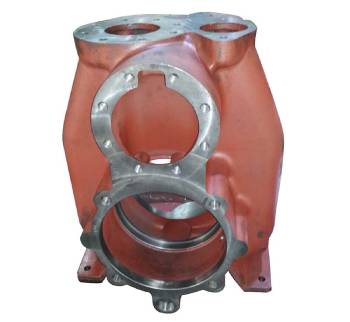+86 311 85258258
+86 311 85258258
Oct. 28, 2020
The pump casing and shaft sealing device of a pump is very important for a pump. Let us briefly introduce the pump case and shaft sealing device of the centrifugal pump.
Pump casing: The outer part of the pump impeller is called the pump casing, also called the pump body.
There are 6 functions:
A. The function is to close the impeller in a certain space so that the liquid can be sucked and pressed out by the action of the impeller.
B. The pump casing is mostly made of volute shape, so it is also called a volute. As the cross-sectional area of the flow passage gradually expands, the high-speed liquid thrown around the impeller gradually reduces the flow rate of the self-priming pump, so that part of the kinetic energy is effectively converted into static pressure energy.
C. The water pump casing not only collects the liquid thrown out by the impeller, but also an energy conversion device.
D. Introduce the liquid evenly into the impeller, and collect the liquid flowing out of the impeller at high speed, and send it to the next stage or lead to the outlet.
E. Screw pump: Realize energy conversion, slow down the flow rate, and change the energy into pressure energy.
F. Connect other parts, and air support.

Pump Casing
The function is to prevent the liquid in the pump casing from leaking along the shaft or the outside air from leaking into the pump casing.
Commonly used shaft seal devices include packing seal and mechanical seal.
Asbestos rope immersed in oil or coated with graphite is generally used as the filler. The mechanical seal mainly relies on the relative movement between the moving ring mounted on the shaft and the static ring fixed on the pump housing to achieve the purpose of sealing.
Shaft seal classification:
The packing seal has a simple structure, low price, and convenient maintenance. But the leakage is large and the power loss is large. Therefore, the packing seal is used to transport general media, such as water, etc.; it is generally not suitable for petroleum and chemical media, especially can not be used in precious, explosive, and toxic media.
The mechanical seal (also known as the end face seal) has a good sealing effect, small leakage, and long life, but it is expensive and requires higher processing, installation, and maintenance than general seals.
The mechanical seal is suitable for transporting petroleum and chemical media and can be used for a variety of media with different viscosities, strong corrosiveness, and particles. The American Petroleum Institute standard API610 (8th edition) stipulates that, unless specified by the user, a cartridge mechanical seal should be equipped.
The dynamic seal can be divided into two types: the back leaf seal and the auxiliary impeller seal. When the pump is working, the centrifugal force of the backrest blade (or auxiliary impeller) causes the medium pressure at the shaft seal to drop to normal pressure or negative pressure, so that the pump does not leak during use. The centrifugal force disappears when parking and the sealing effect of the back blade (or auxiliary impeller) fails. At this time, the parking sealing device plays a sealing role.
Packing seals are often used in parking seals that are matched with the back blade (or auxiliary impeller). There are two types of packing seals: ordinary type and mechanical elastic type. Ordinary packing seal is similar to the general packing seal pump, requiring a slight positive pressure at the shaft seal to avoid dry friction of the packing. The mechanical elastic packing seal adopts counterweight to loosen the packing when the pump is running and compresses the packing when it stops.
Zen Young--Stainless Steel Pump casing supplier provides the above information.